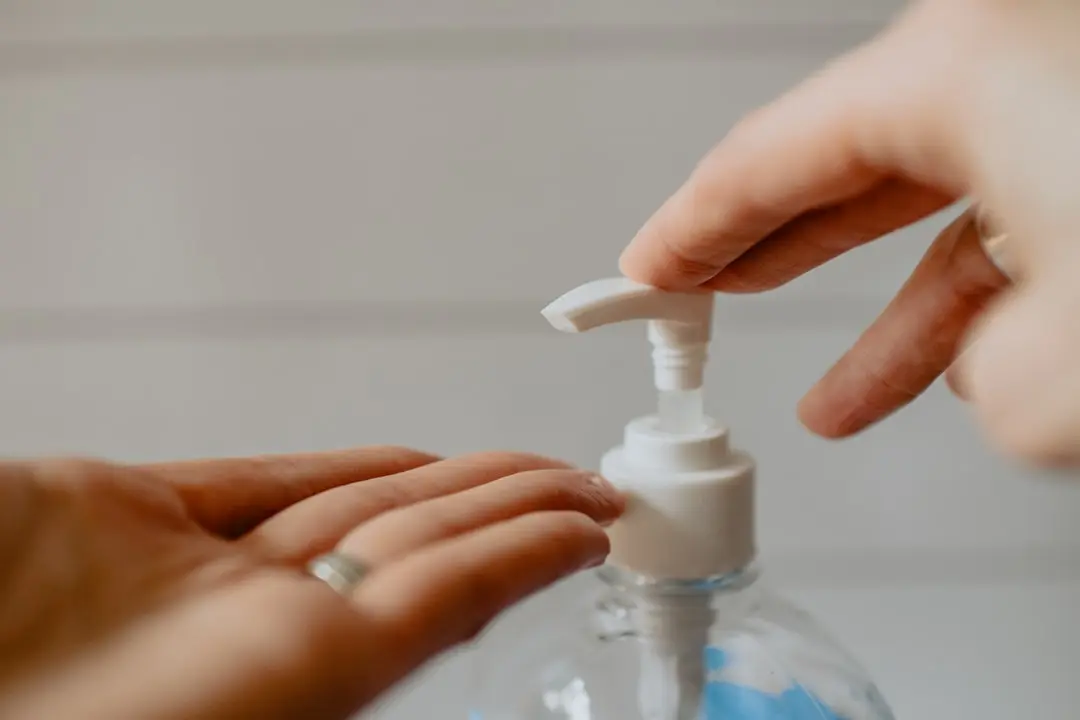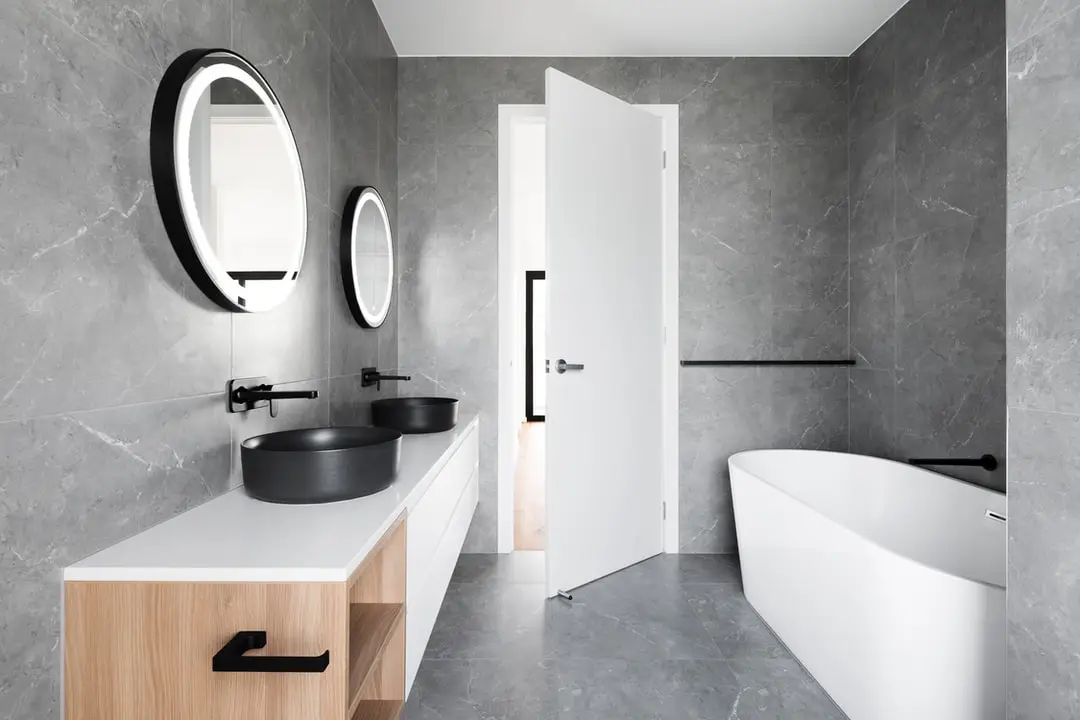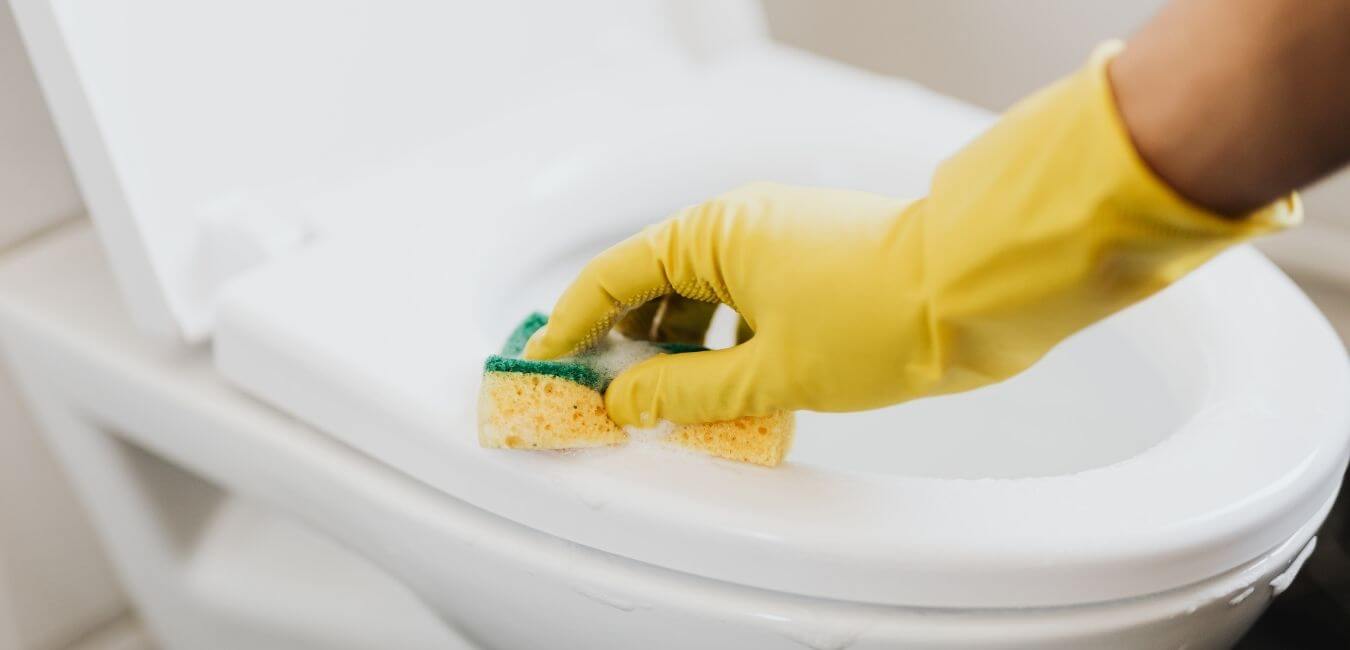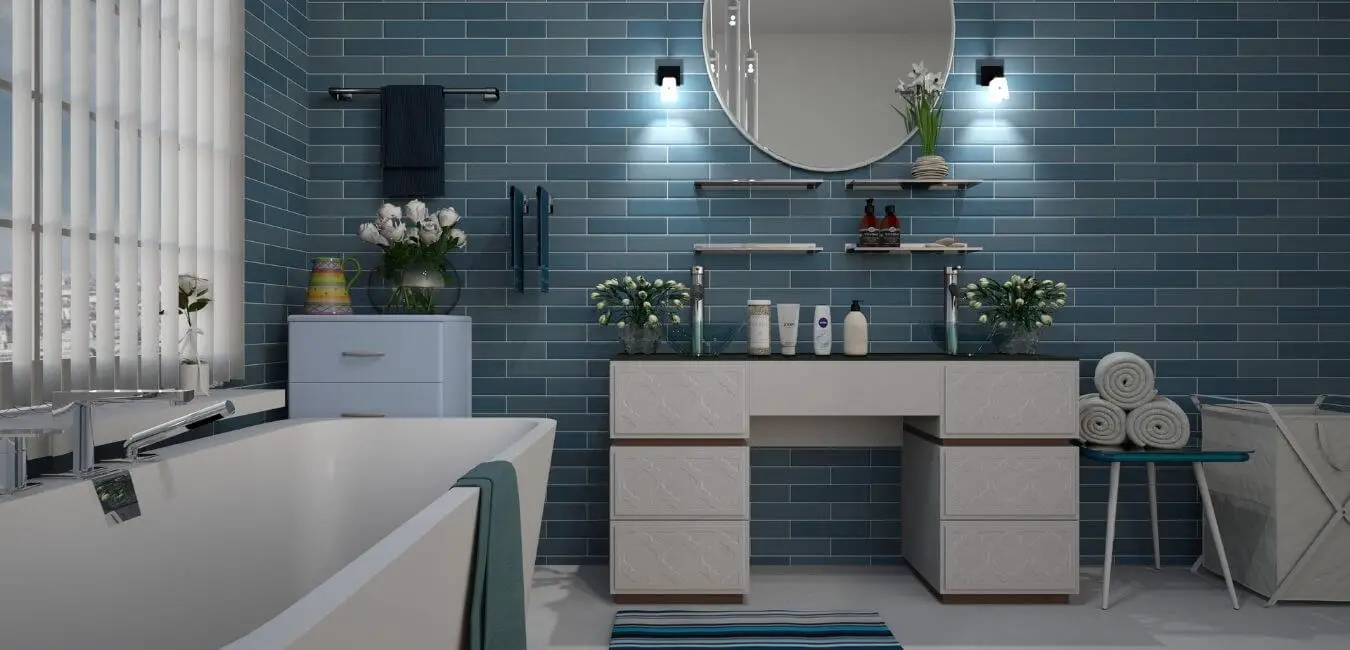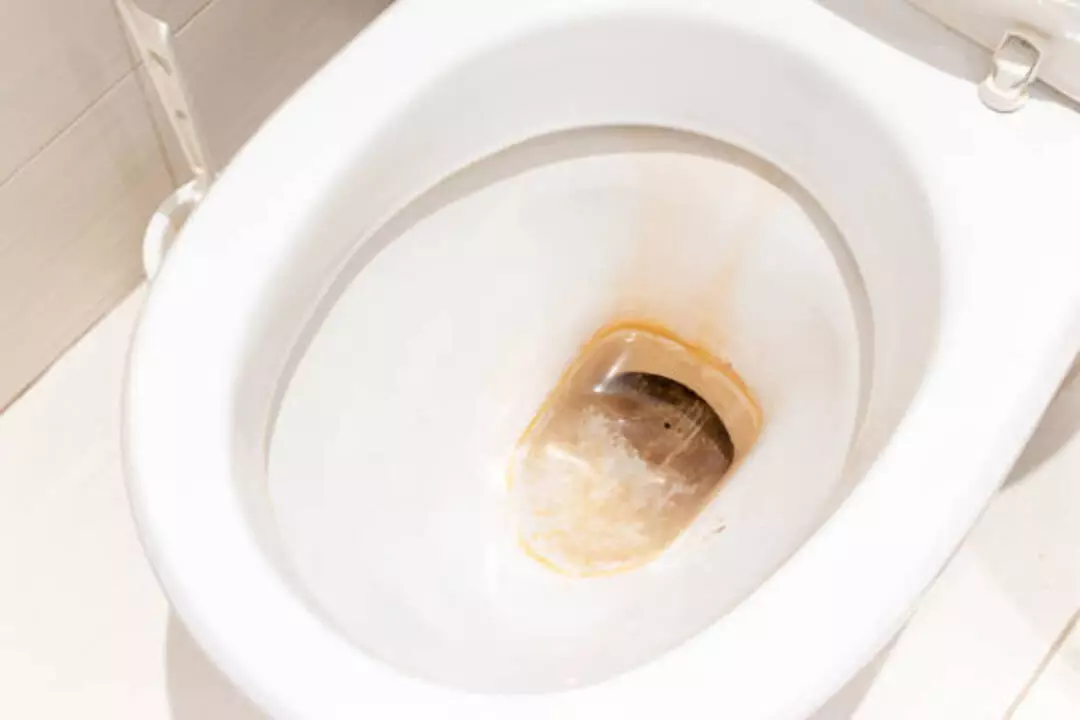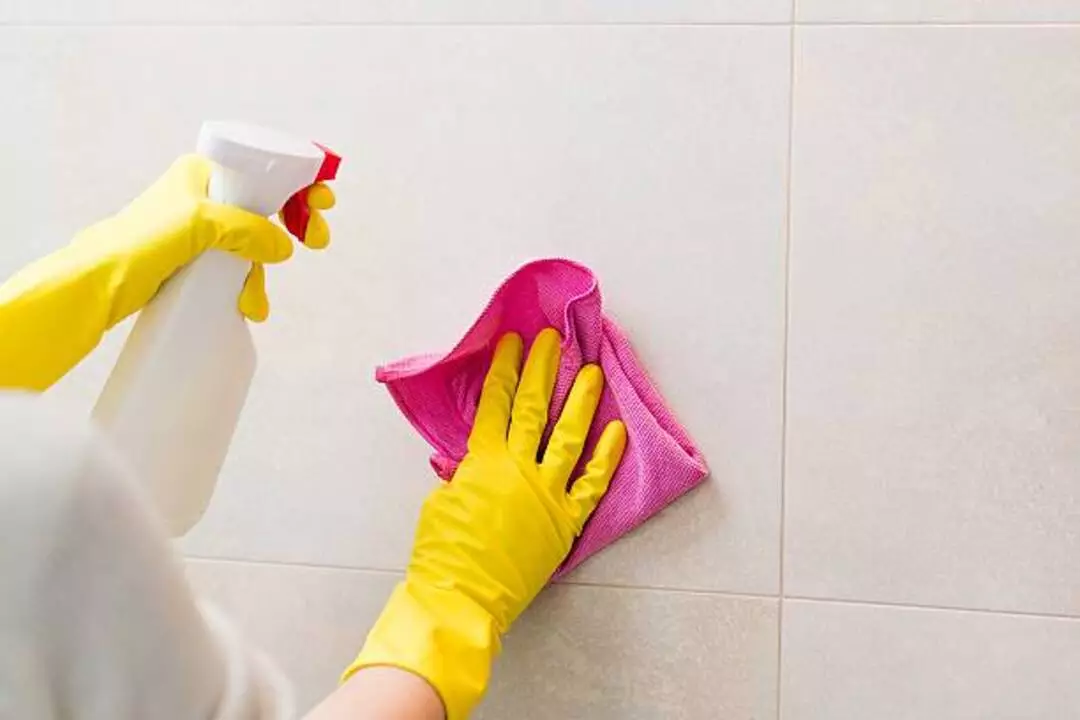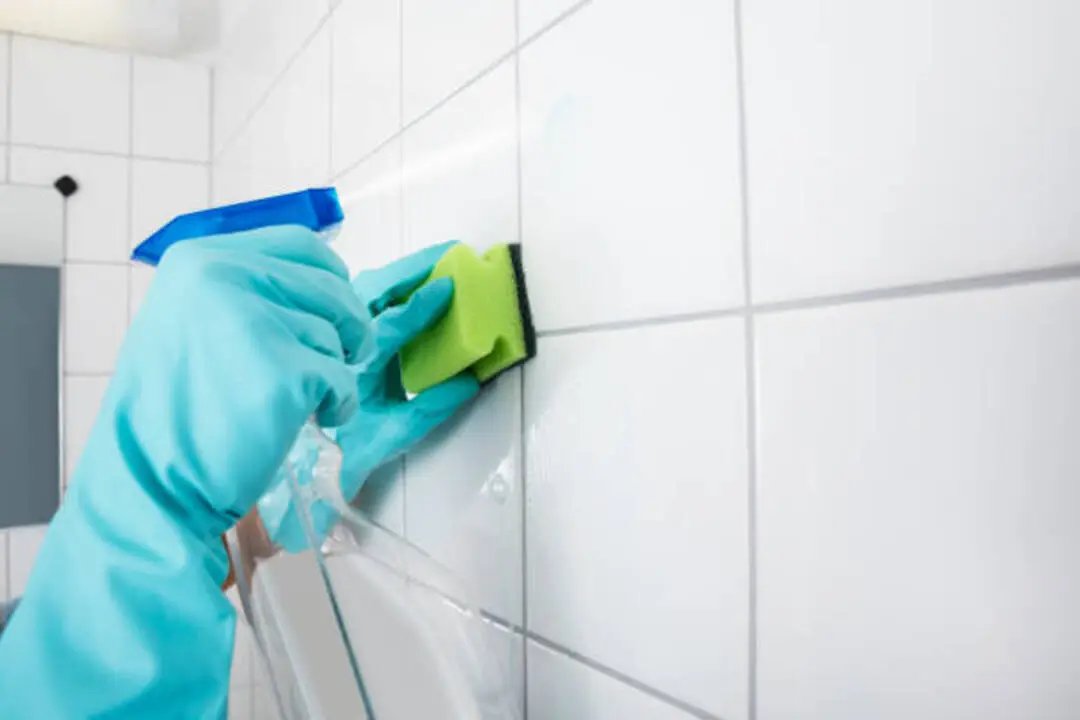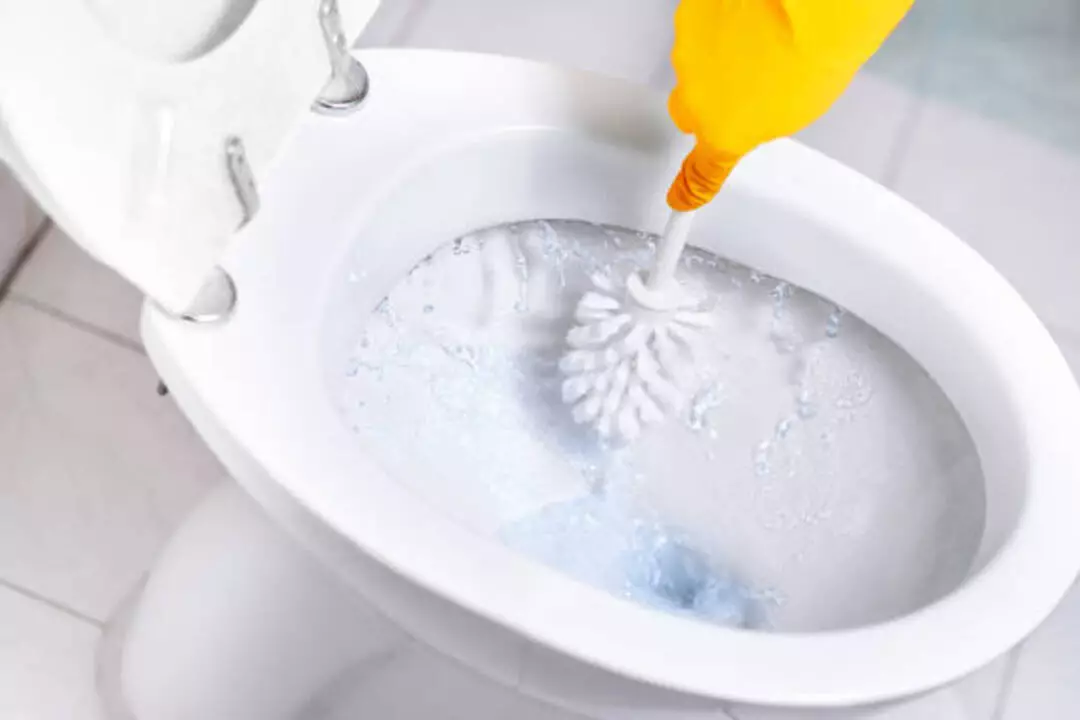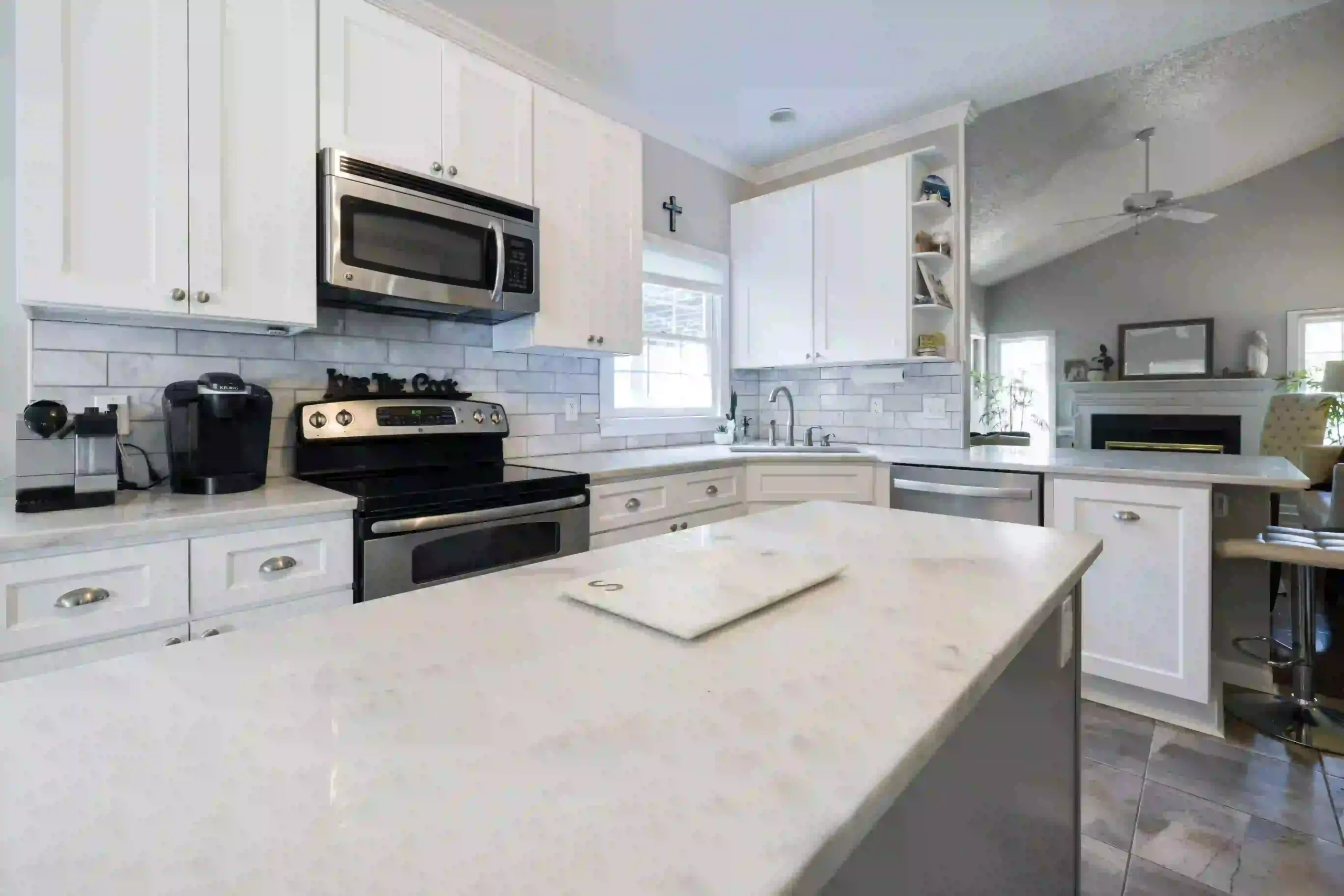In today’s fast-paced world, it’s easy to accumulate clutter and feel overwhelmed by the sheer amount of stuff that surrounds us. Whether it’s a messy closet, an overflowing garage, or a cluttered workspace, the task of decluttering can seem daunting and insurmountable.
However, taking control of our physical environment has numerous benefits for our mental health and overall well-being. That’s why we’ve compiled a list of tips and tricks to help you start decluttering when you’re feeling overwhelmed.
By implementing these strategies, you’ll be on your way to creating a more organized and peaceful living space in no time. So let’s dive in and discover how to tackle clutter head-on.
Understanding the challenges of decluttering when overwhelmed
When faced with the overwhelming task of decluttering, it’s important to understand the challenges that come with it. Some common challenges include:
- Emotional attachment: Letting go of sentimental items can be difficult, as they hold memories and sentimental value. Finding a balance between keeping meaningful items and decluttering is crucial.
- Analysis paralysis: Feeling overwhelmed by the sheer volume of possessions can lead to indecisiveness and a lack of direction. It’s essential to break down the decluttering process into smaller, manageable tasks.
- Lack of time: Many people feel overwhelmed by the idea of decluttering their entire house. Finding time within a busy schedule can be a challenge, but starting with small projects can make a big difference.
- Fear of making things worse: The temporary mess created during the decluttering process can be discouraging. Minimizing the mess by regularly disposing of recycling, rubbish, and donations can help alleviate this concern.
- Knowing what to do with unwanted items: Figuring out what to do with the things that are being decluttered can be a daunting task. Researching donation centers, recycling options, and proper disposal methods can make the process easier.
By understanding these challenges and implementing strategies to overcome them, decluttering can become a more manageable and successful endeavor.
Just Get Started
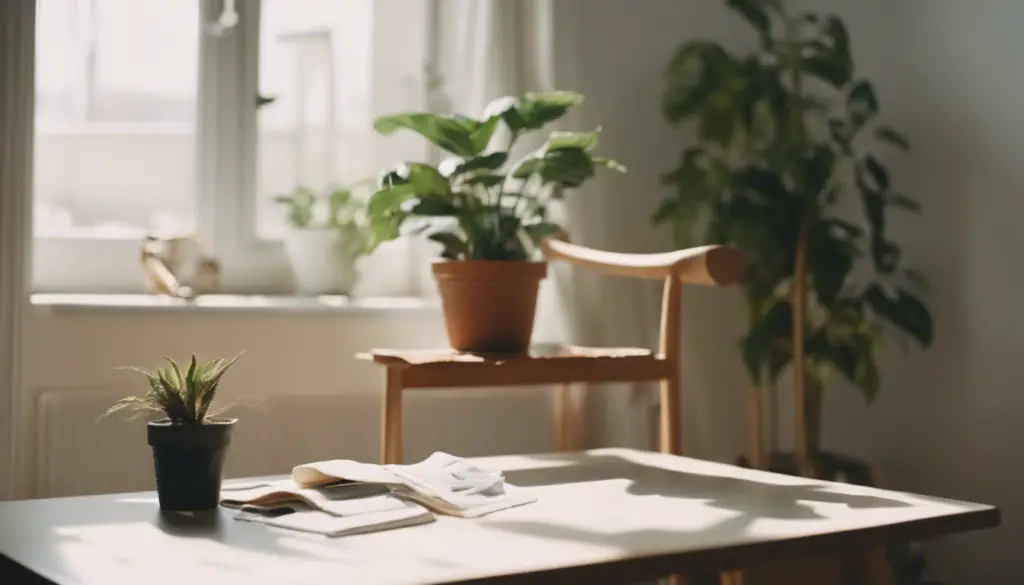
Overcoming analysis paralysis and taking the first step
Overcoming analysis paralysis and taking the first step is often one of the biggest challenges when it comes to decluttering. Here are some tips and tricks to help you get started:
- Start with small tasks: Break down your decluttering goals into manageable chunks. Begin with one drawer, one shelf, or one small area at a time. This will help you build momentum and make the process feel less overwhelming.
- Use the “5-Minute Rule”: Set a timer for just 5 minutes and focus on decluttering for that short amount of time. This can help you overcome the initial resistance and make it easier to take that first step. You’ll be surprised at how much you can accomplish in just a few minutes.
- Set realistic goals: Decide on the specific areas you want to tackle and set a timeline for each. Prioritize the spaces that cause you the most stress or where you spend the most time. Having a plan in place will keep you motivated and organized.
- Visualize the end result: Imagine how your space will look and feel once it’s decluttered and organized. Creating a clear mental image of your ideal space can help motivate you to take action and keep going, even when it gets challenging.
Remember, decluttering is a process, and it’s okay to start small. Taking that first step is often the hardest part, but once you get started, you’ll likely find it easier to continue and make progress towards a clutter-free home.
Implementing the 5-Minute Rule for Decluttering
When it comes to decluttering, implementing the 5-Minute Rule can be an effective strategy, especially for those who are overwhelmed or new to the process. The idea behind this rule is to start small and gradually build momentum by dedicating just five minutes a day to decluttering. Here are some tips for implementing the 5-Minute Rule:
- Set a timer: Use a timer to ensure that you stick to the designated five-minute time frame. This helps to create a sense of urgency and focuses your efforts.
- Choose a specific area: Select a small area or specific task to tackle during your five-minute decluttering sessions. This could be a shelf, a drawer, or even a small pile of papers.
- Stay focused: During the five minutes, avoid getting distracted by other areas or tasks. Concentrate on the chosen area and aim to make progress within the given time frame.
- Make quick decisions: When decluttering, it’s important to make quick decisions about what to keep, donate, or discard. Trust your instincts and remember that the goal is to simplify and create a clutter-free space.
By implementing the 5-Minute Rule, you can gradually declutter your space without feeling overwhelmed. It’s a manageable approach that can provide a sense of accomplishment and motivate you to continue decluttering in the long run.
Create a Plan
Developing a decluttering strategy and setting goals
Developing a decluttering strategy and setting goals is crucial when overwhelmed by the task at hand. Here are some tips to help you get started:
- Assess your needs: Take a step back and evaluate the areas in your home that need decluttering the most. Identify problem areas, such as closets or countertops, and prioritize them based on urgency and importance.
- Set realistic goals: Break down your decluttering journey into manageable tasks and set specific goals for each session. For example, aim to declutter one room or tackle a specific category of items, like clothes or books.
- Create a timeline: Set deadlines or timelines for each decluttering task to keep yourself motivated and accountable. This will help you stay on track and prevent the process from dragging on indefinitely.
- Use the 5-Minute Rule: When feeling overwhelmed, start with small, achievable tasks that can be completed in five minutes or less. This can include organizing a drawer, clearing a surface, or sorting through a pile of papers. These quick wins will build momentum and prevent you from getting discouraged.
Remember, decluttering is a process, and it’s important to be patient and kind to yourself throughout the journey. Celebrate your progress, no matter how small, and stay motivated by visualizing the clutter-free space you desire.
Creating a timeline and prioritizing areas to tackle
Creating a timeline and prioritizing areas to tackle is an essential step in the decluttering process when feeling overwhelmed. By setting a timeline, you can break down the decluttering journey into manageable steps and avoid becoming overwhelmed with the entire task. Here are some tips for creating a timeline:
- Identify the areas causing the most stress: Take a look at your living space and identify the areas that are causing the most stress or clutter. This could be a messy closet, a cluttered kitchen countertop, or a disorganized home office.
- Prioritize the areas: Once you have identified the areas, prioritize them based on their impact on your daily life and stress levels. Start with the areas that are causing the most frustration and work your way down the list.
- Set realistic deadlines: Assign a realistic deadline for each area. Be mindful of your available time and energy, and set achievable goals. Breaking down the decluttering process into smaller timelines will make it more manageable and less overwhelming.
- Create a schedule: Create a daily or weekly schedule that includes dedicated time for decluttering. Stick to the schedule as much as possible, and celebrate your progress along the way.
Remember, decluttering is a process that takes time, so be patient with yourself and celebrate each small victory. By creating a timeline and prioritizing areas to tackle, you can make the decluttering journey more organized and less overwhelming.
Focus Yourself
Strategies for staying motivated and maintaining focus during the decluttering process
Staying motivated and maintaining focus during the decluttering process can be challenging, but these strategies can help keep you on track:
- Set Goals: Break down your decluttering project into smaller, manageable tasks and set specific goals for each session. This will give you a sense of accomplishment as you complete each task.
- Use Visualization Techniques: Visualize your ideal, clutter-free space to remind yourself of the end result. Create a vision board or find inspiration online to help you stay motivated.
- Practice Positive Affirmations: Use positive self-talk to reinforce your motivation and belief in your ability to declutter. Repeat affirmations such as “I am creating a calm and organized environment” or “I deserve to live in a clutter-free space.”
- Break Tasks into Chunks: Instead of tackling the entire house at once, break down decluttering tasks into smaller chunks. Focus on one area or category at a time, such as a single closet or a specific room.
- Track Progress: Keep a record of the progress you have made. Taking before and after photos can be a great way to visually see the difference and stay motivated.
Remember, decluttering is a process, and it’s okay to take breaks and celebrate small victories along the way. Stay focused on your goals and remember the benefits of a clutter-free space.
Using visualization techniques and positive affirmations
Using visualization techniques and positive affirmations can be powerful tools in overcoming the overwhelm of decluttering. By visualizing your ideal decluttered space, you can create a clear image of what you’re working towards and stay motivated throughout the process. Close your eyes and imagine the space free of clutter, organized, and visually pleasing. Envision how it would feel to move freely and easily in that space.
Another helpful technique is to use positive affirmations. Repeat positive statements to yourself, such as “I am capable of decluttering my space,” “I can create a peaceful and organized environment,” or “I am making progress with each item I let go of.” Affirmations can help shift your mindset and build confidence in your ability to declutter effectively.
Both visualization and positive affirmations help to reframe your thinking and keep you focused on the end goal. They can provide a sense of direction and motivation when you feel overwhelmed or unsure of where to start.
Start with Small Projects
Breaking down decluttering tasks into manageable chunks
Breaking down decluttering tasks into manageable chunks is crucial when feeling overwhelmed by the decluttering process. Here are some tips to help break it down:
- Make a plan: Before starting, create a plan of action and determine which areas or rooms to tackle first.
- Divide and conquer: Break down each area into smaller tasks or sections to make them more manageable.
- Set a time limit: Allocate a specific amount of time for each task to stay focused and prevent burnout.
- Use the 15-minute rule: Commit to decluttering for just 15 minutes a day. This approach helps maintain motivation and consistency.
- Start with quick-win areas: Begin with smaller spaces or less cluttered areas to experience immediate progress and build momentum.
- Habit stack: Pair decluttering tasks with existing habits or activities, such as decluttering while watching TV or after doing the dishes.
- Track your progress: Use a checklist or tracker to visually see the progress you’ve made, providing a sense of accomplishment.
- Reward yourself: Treat yourself to small rewards or breaks after completing specific tasks or milestones.
- Ask for help: Enlist the assistance of family or friends to make the process more efficient and enjoyable.
By breaking down decluttering tasks, it becomes easier to manage and less overwhelming, ultimately leading to a more organized and clutter-free space.
Tips for decluttering specific areas of the home
When it comes to decluttering specific areas of the home, it’s important to approach each space with a plan and a clear vision of the end result. Here are some tips to help you tackle different areas of your home:
Kitchen:
- Start by emptying your cabinets and drawers and sorting items into categories.
- Get rid of duplicates and items that are broken or expired.
- Use drawer dividers and organizers to maximize space and keep everything tidy.
- Consider donating or selling appliances or kitchen gadgets that you no longer use.
Living Room:
- Remove any items that don’t belong in the space.
- Declutter surfaces by organizing books, magazines, and other items on shelves or in storage bins.
- Consider investing in storage ottomans or coffee tables with built-in storage to keep clutter out of sight.
- Donate or sell any furniture or decor items that no longer serve a purpose or bring you joy.
Bedroom:
- Start by decluttering your closet and getting rid of clothes, shoes, and accessories that you no longer wear or love.
- Use storage bins or organizers to keep your drawer contents neat and easily accessible.
- Consider creating a designated area for items like jewelry, accessories, and personal care products.
Bathroom:
- Clear out expired medications, old toiletries, and empty bottles.
- Use bins or baskets to organize your vanity area and keep everything in its place.
- Consider implementing a regular cleaning routine to prevent future clutter buildup.
Remember, decluttering is a continuous process, so be patient with yourself and take it one step at a time. Celebrate your progress along the way and use the newfound space and organization as motivation to keep going.
Deal with Sentimental Items
Making decisions about sentimental possessions
When it comes to decluttering, one of the most challenging aspects is making decisions about sentimental possessions. These are items that hold emotional value and are often associated with memories and personal attachments. Here are some tips to help you navigate this process:
- Take time to reflect: Before deciding to part with a sentimental item, take a moment to reflect on why it holds significance for you. Consider the memories and emotions associated with it.
- Consider the practicality: Evaluate whether the sentimental item serves a practical purpose in your life. If it’s sitting unused and taking up space, you may need to reassess its importance.
- Identify what truly matters: Determine the sentimental items that truly hold deep meaning for you. Focus on keeping those that represent cherished memories or have a special significance.
- Find alternative ways to preserve memories: If the physical item is not essential, consider alternative ways to preserve the memories associated with it. Take photos, create a digital scrapbook, or write down the stories connected to the item.
- Share with loved ones: If you believe a sentimental item may have value for someone else, consider passing it on to a family member or friend who would appreciate it and cherish it.
Remember, decluttering is a personal journey, and the decision to let go of sentimental possessions is entirely up to you. Be gentle with yourself and trust your instincts as you make these decisions.
Strategies for preserving memories while decluttering
Preserving memories is an important concern when decluttering, as sentimental items often hold significant emotional value. Here are some strategies to help you navigate this aspect of decluttering:
- Photographs: Consider digitizing old photographs to save space while still preserving the memories. You can either scan the physical prints or use a dedicated photo scanning service.
- Memory boxes: Create designated memory boxes where you can store small sentimental items such as letters, tickets, or small trinkets. Limit the size of the box to avoid hoarding too many items.
- Digitize documents: Store important documents such as letters or certificates digitally. Scan them and organize them in folders on your computer or in cloud storage services.
- Journaling: Write down memories and stories associated with certain items. This way, you can preserve the essence of the memory without having to keep the physical object.
- Take photos: If you have sentimental items that you don’t want to keep, but still want to remember, take photographs of them. You can create a digital album or a collage to reminisce about the items without cluttering your physical space.
Remember, the goal is to declutter and organize your space, while still finding ways to honor and cherish the memories that are important to you.
Minimize the Mess
Tips for minimizing the mess and organizing decluttered items
When decluttering, it’s important to minimize the mess and keep things organized to maintain a sense of order and prevent overwhelm. Here are some tips to help you achieve that:
- Take it step by step: Break down the decluttering process into smaller tasks or areas to tackle one at a time, such as decluttering one room or one category of items at a time.
- Sort and categorize: As you declutter, create separate piles or bins for items to keep, donate, sell, or dispose of. This will help you easily manage the items and ensure they are properly sorted.
- Keep cleaning supplies handy: Have cleaning supplies nearby to wipe down surfaces as you go to prevent dust and dirt from accumulating. This will help maintain cleanliness as you declutter.
- Use storage solutions: Invest in storage containers or organizers to keep items neatly arranged and easily accessible. This will help create a clutter-free environment and make it easier to find and put away items.
- Create a labeling system: Use labels or tags to identify the contents of storage boxes or bins. This will make it easier to locate items in the future and maintain an organized space.
- Regularly declutter: Make decluttering a regular habit to prevent the accumulation of unnecessary items. Set aside a specific time each month or season to review and declutter.
By following these tips, you can minimize the mess while decluttering and ensure that your newly organized space stays clutter-free.
Managing recycling, donations, and proper disposal
Managing recycling, donations, and proper disposal is an essential aspect of the decluttering process. Here are some tips to effectively handle these aspects:
- Recycling: Identify items that can be recycled, such as paper, cardboard, glass, plastic, and electronics. Separate them into different bins or bags and take them to the appropriate recycling centers in your area. Consult your local waste management guidelines to ensure you are following the proper recycling procedures.
- Donations: Many items that you no longer need or want can still be useful to others. Consider donating gently used clothing, furniture, appliances, and household goods to local charities, thrift stores, or shelters. Research organizations in your community that accept donations and arrange for drop-off or pick-up services.
- Proper Disposal: Some items, such as expired medicine, hazardous materials, and electronic waste, require special disposal methods to prevent harm to the environment. Check with your local municipality or waste management services to find designated disposal sites or collection events for these items.
- Organizing Decluttered Items: Once you have sorted through your belongings and decided what to keep, find appropriate storage solutions to keep your space organized. Consider using labeled bins, storage boxes, or shelves to keep items easily accessible and neatly arranged.
Remember, the goal of decluttering is to create a harmonious living space while minimizing waste. By managing recycling, donations, and proper disposal effectively, you can declutter responsibly and contribute to a more sustainable lifestyle.
For more information on decluttering and organization, visit our blog.
Maintain a Decluttering Habit
Creating a regular decluttering routine
Creating a regular decluttering routine is essential for maintaining a clutter-free home. Here are some tips to help you establish a routine:
- Set a schedule: Choose specific days or times each week to dedicate to decluttering. This will help you stay consistent and make decluttering a regular part of your routine.
- Start small: Break down decluttering tasks into manageable chunks. Focus on one room or area at a time, and gradually work your way through your entire home.
- Prioritize: Identify areas that require more attention and tackle them first. This could be areas that accumulate clutter quickly or spaces that have been neglected for some time.
- Use a system: Have designated bins or bags for items that you want to donate, sell, recycle, or throw away. This will make the decluttering process more organized and efficient.
- Maintain organization: Once you have decluttered a space, make an effort to keep it tidy. Implement daily or weekly habits to prevent clutter from accumulating again.
Remember, consistency is key when it comes to maintaining a clutter-free home. By creating a regular decluttering routine, you’ll be able to enjoy a clean and organized living space.
Habit-stacking techniques for integrating decluttering into daily life
When it comes to decluttering, integrating the habit into your daily life can be a game-changer. Habit-stacking is a technique that allows you to link a new habit, such as decluttering, with an existing habit, making it easier to incorporate into your routine. Here are some habit-stacking techniques for integrating decluttering into daily life:
- Morning Routine: Include decluttering as part of your morning routine. Set aside a few minutes each morning to tidy up a specific area or declutter a few items before starting your day.
- TV Time: Use commercial breaks or the time spent watching TV as an opportunity to declutter. During each break, challenge yourself to find one item to donate or discard.
- Meal Prep: While waiting for water to boil or food to cook, take a few minutes to declutter a small area or organize a drawer. This helps make productive use of your time in the kitchen.
- Bedtime Routine: Before going to bed, spend a few minutes decluttering your nightstand or clearing any clutter from your bedroom. This creates a calm and peaceful environment for better sleep.
- Laundry Time: Use the time spent folding laundry as an opportunity to declutter. Sort through your clothing and remove any items you no longer wear or need.
Remember, habit-stacking is all about incorporating small, manageable actions into your existing routines. By linking decluttering with activities you already do regularly, you can seamlessly integrate it into your daily life and make progress towards a clutter-free home.
Final thoughts
Starting the decluttering journey can feel overwhelming, but it’s important to remember that you don’t have to tackle everything at once. Here are some final thoughts and encouragement to help you get started:
- Adopt a positive mindset: Instead of seeing decluttering as a daunting task, view it as an opportunity to create a more organized and peaceful living space.
- Make a plan: Create a decluttering plan that outlines the areas you want to tackle and set achievable goals for each session. Breaking down the process into smaller tasks will make it more manageable.
- Get the necessary supplies ready: Gather garbage bags, boxes for donations, and cleaning supplies to make the decluttering process smoother.
- Start small: Begin with a small project or focus on one area at a time. This will give you a sense of accomplishment and motivate you to continue.
- Use the 5-Minute Rule: Commit to decluttering for just 5 minutes a day. This small time commitment can yield significant results over time.
Remember, decluttering is a journey, and progress takes time. Celebrate each step forward and don’t be too hard on yourself. With determination and perseverance, you can create a clutter-free and organized living space.

